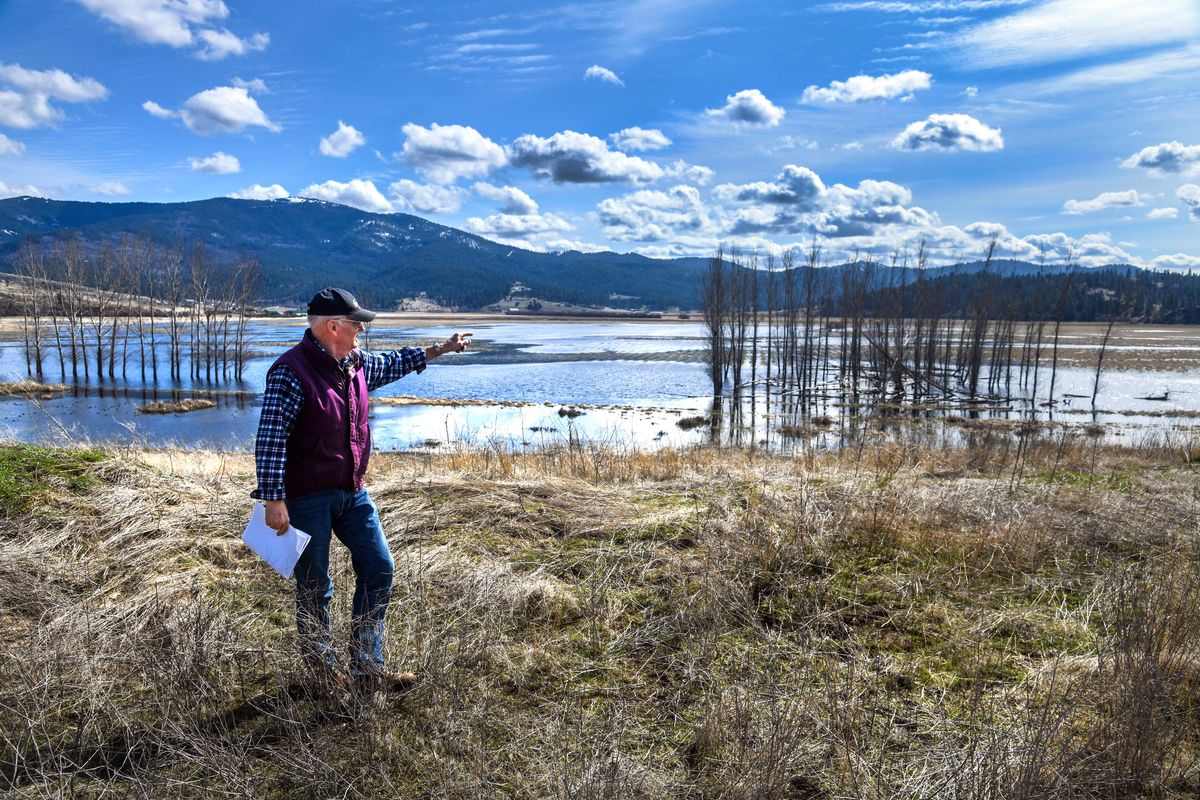Spokane County, Central Valley district make Saltese Flats wetlands restoration project a reality

Restoration of the Saltese Flats natural wetland system has been in Spokane County’s plans for close to a decade. But now, a partnership with the Central Valley School District will help bring the project to fruition for educational opportunities and recreational use.
The wetland restoration project – to be east of a new high school that voters approved in the Central Valley School District near 16th Avenue and Henry Road – will include multiuse trails, a bird habitat, viewing areas and an interpretive center with an auditorium, classrooms and meeting space.
Bud Morrison, who resides at and operates a cattle ranch in the Saltese Flats, sold more than 300 acres to Spokane County in 2010 for the restoration project with an agreement to build an interpretive center to honor of his mother, Doris, a former school teacher.
Morrison said the interpretive center was to be located on a 3-acre site west of the wetlands. However, through discussions with Spokane County and the school district – which purchased 50 acres of land adjacent to the wetlands in 1980 for a potential school – it was decided to include the interpretive center with the new high school design plans.
The Doris Morrison Interpretive Center will include an exhibit area to provide views of the Saltese Flats and showcase history of the Morrison family, who homesteaded the land in the 1890s.
Spokane County will pay the Central Valley School District $900,000 toward construction of the interpretive center and 25 percent of annual maintenance costs.
“As the school moved (the interpretive center) over there, it was a win-win for everybody,” Morrison said. “The school is going to make it so nice.”
Morrison said the wetland restoration project, in conjunction with Central Valley’s new high school, will be a world-class project spanning more than 1,200 acres. The new high school is expected to be completed in 2021.
“I’ve been a firm believer in the project from the beginning, and the school has brought it all together,” he said.
School district Superintendent Ben Small said it’s an opportunity for the district to collaborate with the county to do something great for the entire region.
Small said district staff members are excited about the wetlands restoration project because it will provide students with opportunities to learn outside of the classroom and could also be used by community groups and other area high schools.
The project will include trails connecting the new high school with the wetlands and the Saltese Uplands Conservation Area.
The 1,200 acres of land where Saltese Flats sits is steeped in history. It was purchased by Bud Morrison’s grandfather, Peter, who drained Saltese Lake in 1894 and used the rich soil from the lake bed to grow hay.
Peter Morrison and crews of hired laborers spent years digging canals to drain the lake. The main drainage canal – Saltese Creek – still exists and flows into Shelley Lake.
After Peter Morrison drained the lake, squatters moved in and attempted to claim about 100 acres of land, stating it could be claimed under U.S. homestead law because it wasn’t surveyed as real estate. Peter Morrison fought the squatters for 12 years and eventually prevailed after the case was heard twice before the U.S. Supreme Court.
During the Great Depression, the land went into receivership. Bud Morrison’s father and siblings subsequently secured funds to buy the property back.
The first phase of the restoration project is to re-create the wetland using natural water runoff from Mica Peak. The final design will call for construction of a water control berm used for the trail, bridges to cross streams, interpretive signs, a bypass ditch to maintain existing water control features and grading to provide additional wetland areas and reconnect streams, said Ben Brattebo, water engineer for Spokane County.
Spokane County was interested in purchasing the land and restoring the wetlands to use as an alternate site to which to pump reclaimed wastewater from the Spokane County Regional Water Reclamation Facility. That option will not be included in the project at this time but could be considered at a later date, Brattebo said.
The county previously encountered roadblocks on the project because the 100-year flood plain topographic map was incorrect, so it is working with FEMA to update the flood maps to ensure the wetland restoration project wouldn’t worsen natural flooding that’s expected once per century.
“It’s been a slow process trying to do restoration for a number of years,” Brattebo said.
Spokane County will begin construction on the wetland project this summer, with completion expected in late 2019.